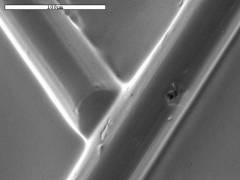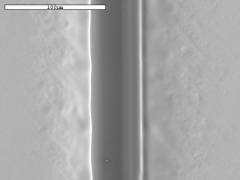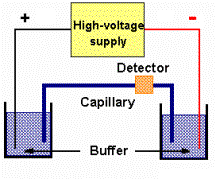|
Rapidly
Prototyped Cell Sorter
|
|
The
progress of microelectronics and microfabrication in the design of sensors
and actuators has provided us with the ability to create complete
integrated microsystems. These
systems are important applications to research in that they reduce the
cost and time of experimental procedures.
Cell separation has previously been done using large scale FACS
(fluorescence activated cell sorters) machines that are expensive, time
consuming, and very complicated to use.
The creation of a microsystem with a specifically designed array of
microchannels can be used to separate cells with much greater ease.
|

|
| The objective of the project is to optimize a
rapidly fabricated cell sorter. Rapid
fabrication deals with the creation of a complex array of microchannels in
PDMS using everyday materials and tools, rather than complex
microfabrication techniques used for MEMS devices and microelectronics.
Cell separation will be driven by electroosmotic flow.
This technique uses an electrical double layer that is formed when
a buffered cell separation array is placed in an electrical field.
|
| The
optimizational importance of the project is to design an array of
microchannels that will separate the cells with the least effort and with
greatest efficiency. The
following diagrams show the rapid fabrication method .
The following schematics shows the setup for electroosmotic flow. The system is similar to a capillary electrophoresis setup only in this case the capillary is the microchannel. |
|
|
The following pictures are SEM pictures of
microchannels that were fabricated using the method described.
|
|

|

|
|
The motivation for the development of such a
system includes reduced
cost, time, reagent/analytes, and increased separation efficiency
portability, and provide analysis compatible to in vivo conditions.
|
|
For
more information:
Gill,
Amrit. Microfluidic Cell Sorter Concepts Using Rapid Fabrication
Techniques. Thesis. (2003)
|
|



